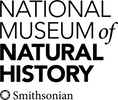portrait

Description:
Cells rounded-oblong to pear shaped, dorso-ventrally flattened. Length 24 - 36 microns, width 19 - 26 microns, breadth (lateral) approximately 12 microns, length to width ratio 1.1 - 1.7. Epicone 2 - 4 microns wide, club-shaped, with two lobes, often slightly deflected to the left. Cingulum beginning 0.1 - 0.3 of the cell length from the apex, relatively wide (1 - 3 microns), incompletely encircling the epicone, distal end approximately 2 - 3 microns higher than proximal. Longitudinal groove (0.5 - 2 microns wide) present on the dorsal side, beginning at the apex and descending through the middle of the cell to 0.6 - 0.9 of the cell length from the apex. Hypocone forms a 'collar' around the epicone in dorsal view, this has a division in the middle due to the dorsal longitudinal groove. Sulcus indistinct. Longitudinal flagellum originating 2 - 3 microns below the proximal end of the cingulum. Nucleus in the posterior part of the hypocone, rounded to crescent shaped, may be to the left of the cell, 9 - 11 x 5 - 10 microns. Chloroplasts yellow-brown, 1 - 2 x 1 - 4 microns, often more concentrated in the centre of the cell. A central, pyrenoid-like structure sometimes observed. Indented around the inside of the periphery of the ventral side, 1 - 2 microns from the cell rim. Non-motile cells more circular, with the hypocone encircling the epicone, surrounded by a hyaline layer. Non-motile cells more commonly observed than motile cells.
Included On The Following Pages:
- Life (biota)
- Cellular
- Eukaryota (eukaryotes)
- SAR (Stramenopiles, Alveolates, Rhizaria)
- Alveolata (alveolates)
- Dinophyceae (dinoflagellates)
- Gymnodiniales
- Gymnodiniaceae
- Testudodinium
- Testudodinium testudo
This image is not featured in any collections.
Source Information
- license
- cc-by-nc
- author
- Shauna Murray
- provider
- micro*scope
- original
- original media file
- visit source
- partner site
- micro*scope
- ID


